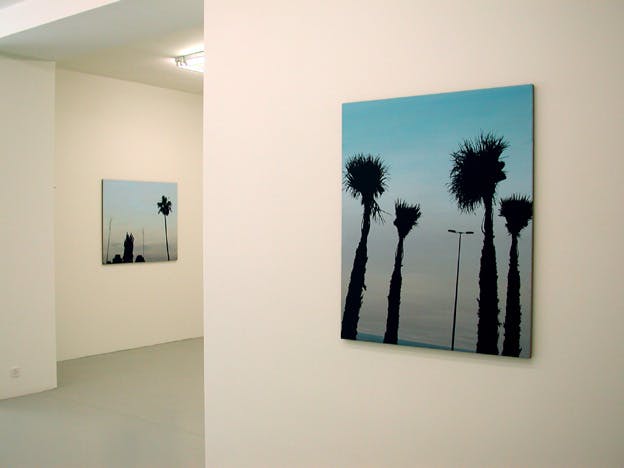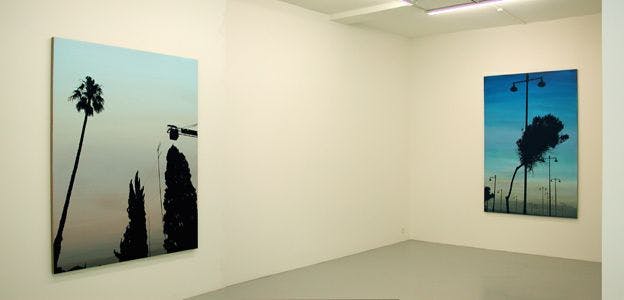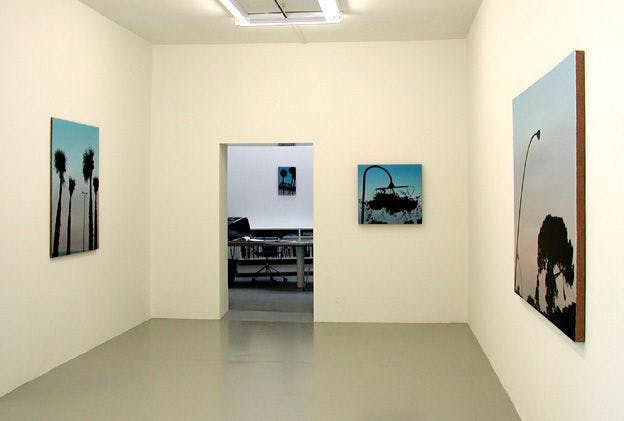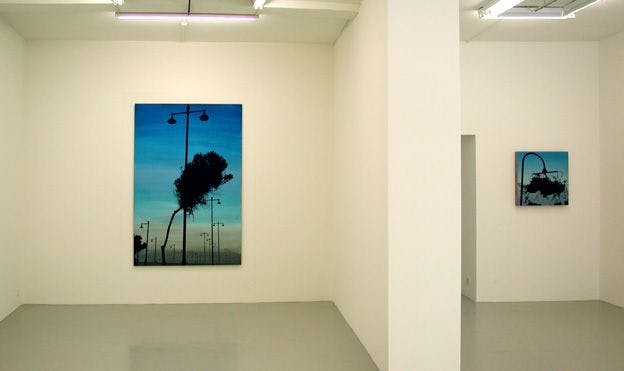We are pleased to present the American artist Glen Rubsamen (*1959 in New York) in his first personal exhibition under the title A Reassuring Lie Unfolds at our gallery. Together with the Annemarie Verna Gallery we have already shown Glen Rubsamen in the group exhibition Two Doors – True Value. The artist lives and works in New York and Köln.
Glen Rubsamen’s oil paintings lead the spectator’s gaze into twilight scenes illuminated by deep blue skies glowing in all possible shades, gradually turning a gentle and soft red, thereby provoking a seductive quality. Silhouettes of trees, street lamps, traffic signs, buildings and other manifestations of civilization can be seen against the light. Reduced to their contours, these dark shapes awaken to their own strange individual existences. In a painstaking and precise manner Glen Rubsamen paints even the most delicate twigs and leaves with the tip of a minute brush, thus suggesting the individuality of their forms. He applies them on top of the subtle glazing and blending tints of his night skies in order to emphasize the surface of his paintings. In this way they seem to belong to the foreground, although ultimately it is not possible for the spectator to place them in a definite context of space and image. These landscape and architectural manifestations recall the classical painting tradition of rendering foreground elements in every detail in order to create a strong stereoscopic effect; here this impression is given by the starkly contrasting nature of the painted elements and the fact that they are often cut by the picture’s frame, yet still they do not fulfill the function of heightening the illusion of depth, nor of facilitating the viewer’s visual comprehension of expanse as well as depth in the landscape, neither do they intercede between the orthogonal picture’s edges and the landscape. On the contrary, they stubbornly oppose the pains taken in constructing a coherent logic of the picture. Rubsamen’s composing strategies consciously negate the orthogonal reference system. The paintings’ edges appear as mere frames, granting random views notwithstanding the meticulous composition of the representations. The casualness of the visual presentations therefore becomes program. And here we may perceive the irony, from an undramatic twinkling of the eye growing into the nearly grotesque, attained by the disciplined and utterly reduced use of the most sparce graphic methods.
Glen Rubsamen cunningly unsettles our conventional expectations of how „landscape“ ought to look like. His aspiration no longer lies in presenting a visual unity and wholeness, therefore the likelihood of conveying an insight by means of the picture is radically questioned. [Iris Wien]











